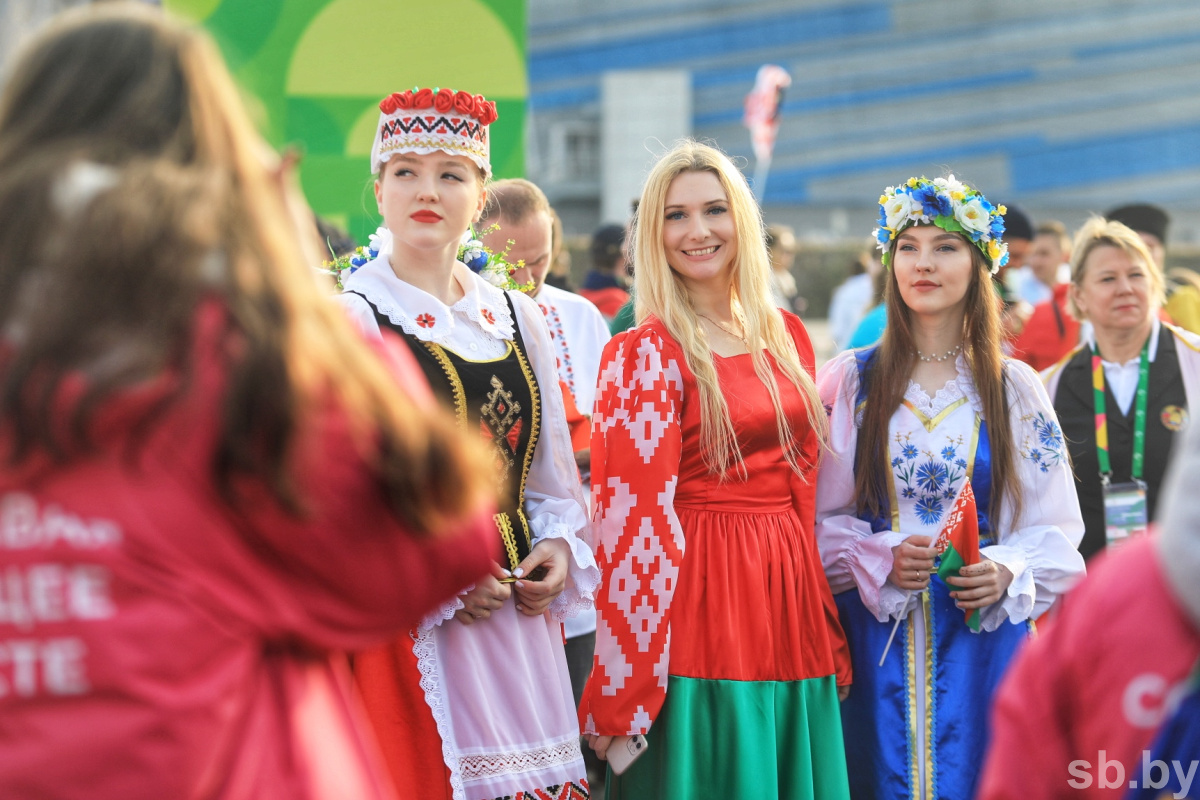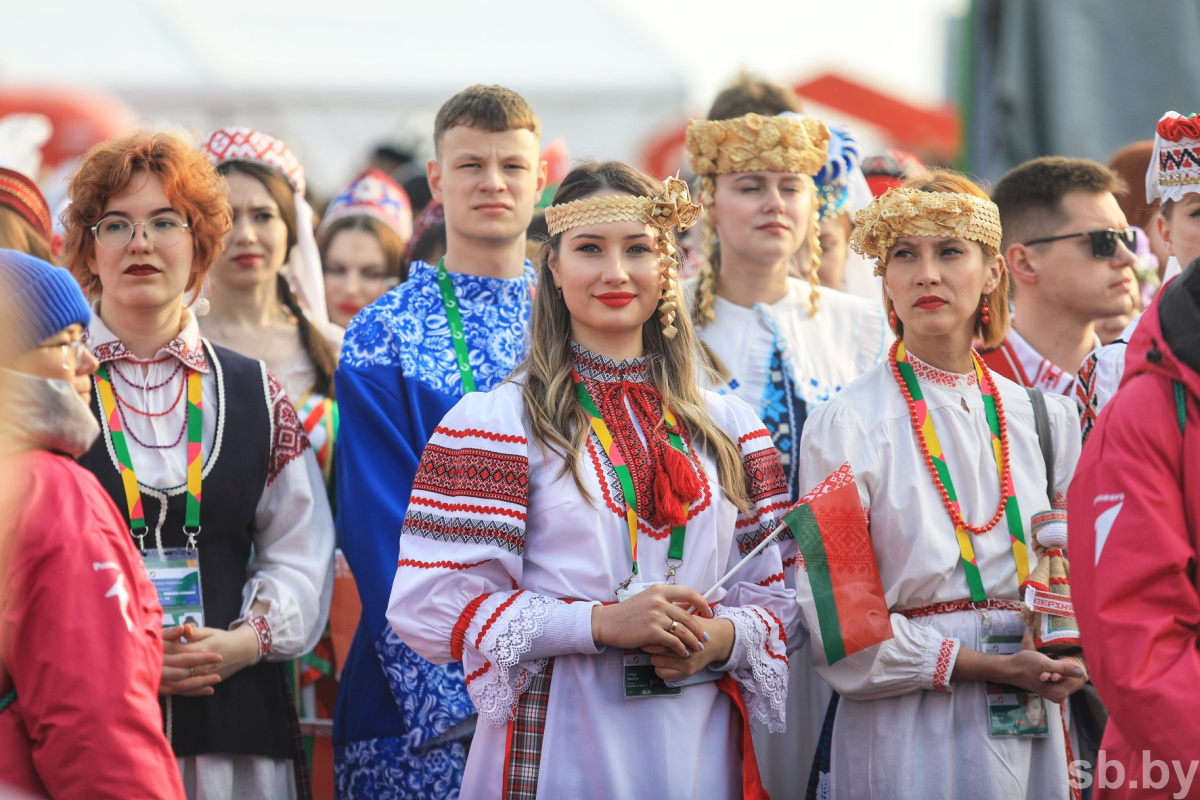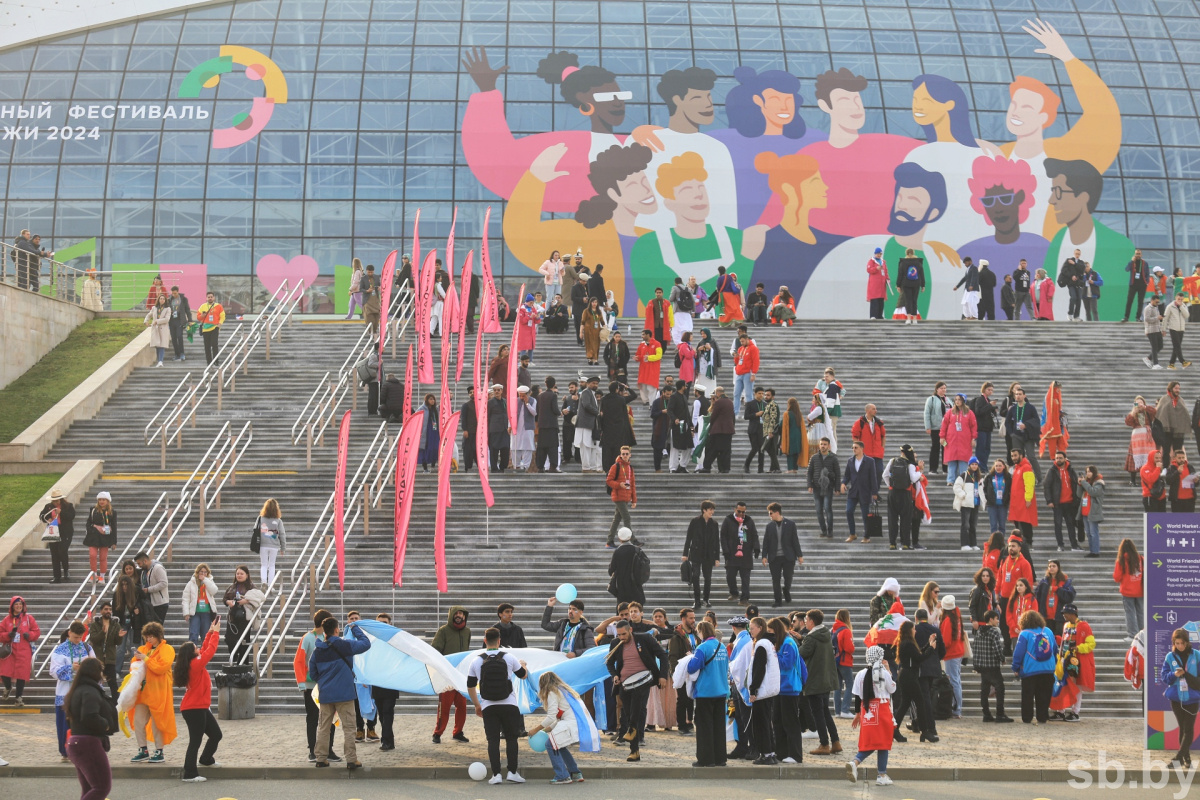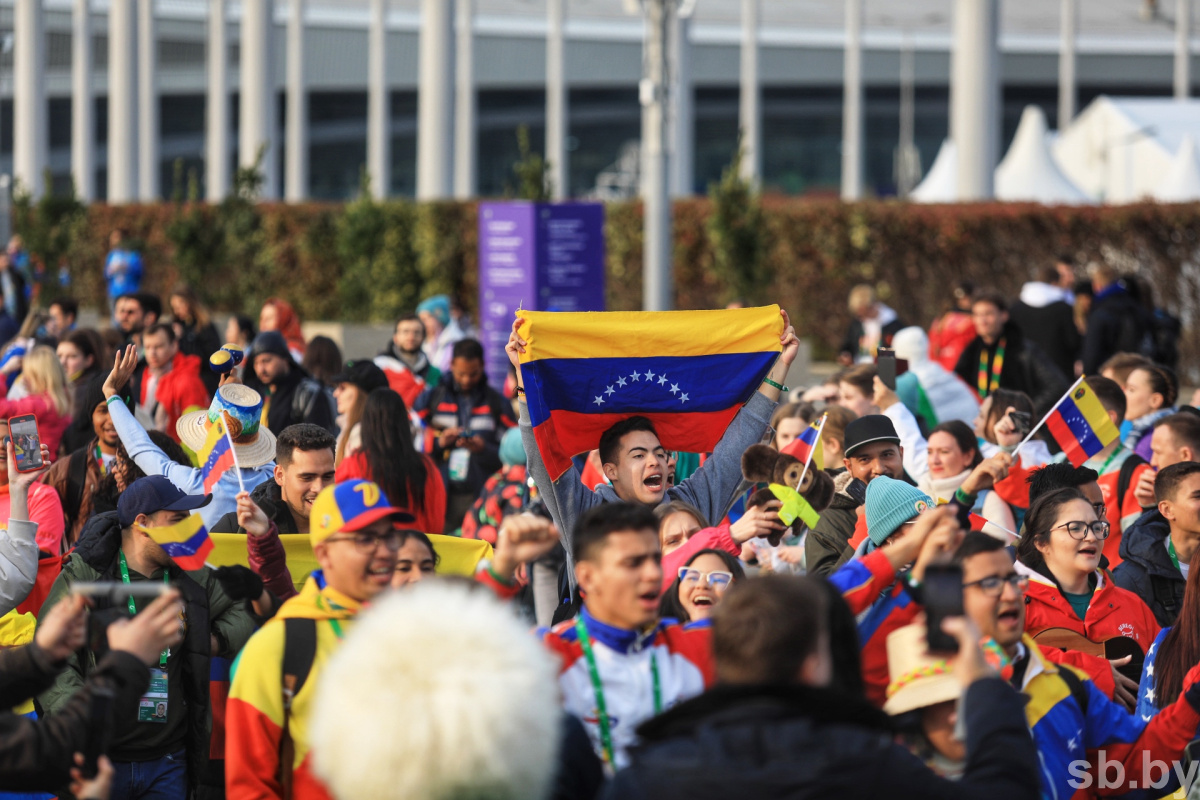Belarusian delegation participated in World Youth Festival 2024 march in Sochi
The World Youth Festival 2024 continues. From March 1st to 7th, about 20,000 young people from all over the world gathered in Sochi to proclaim that there are no barriers to friendship between peoples. The Belarusian delegation went to the south of Russia, comprising 630 people. This is one of the largest delegations at the festival, and, definitely, the most beautiful one.

Aleksandra Orlovskaya is from Minsk, and her outfit immediately attracts attention. The girl represents the Youth Council of Minsk’s Sovetsky District, she is the secretary of BRSM primary organisation of the 34th Central District Clinical Polyclinic. She came to the forum for impressions, “I was really looking forward to the festival, literally crossed off the days. I wanted to meet interesting people, make useful acquaintances, show myself and tell everyone around about my beloved Belarus: what we are rich in and what we are famous for. Tell people how delicious our food is, how generous we are, how we treat other peoples and their culture. Tell them about the Belarusian language and invite everyone to visit Minsk or any other Belarusian city,” Aleksandra Orlovskaya noted.

Aleksandra believes that the World Youth Festival provides an opportunity for a huge number of talented and caring people to gather in one place. She managed to meet representatives of different countries and talk with participants from such Russian cities as Tula, Volgograd and Vologda.
“Many people asked how a particular word would be in the Belarusian language,” Aleksandra said. “For example, I told them that we call a dandelion ‘dzmuhavec’ as you need to ‘dzmuc’ [blow] on it. I read Yakub Kolas' poem Moj Rodny Kut [My Native Corner] and then translated it into English. Everyone loved it!”
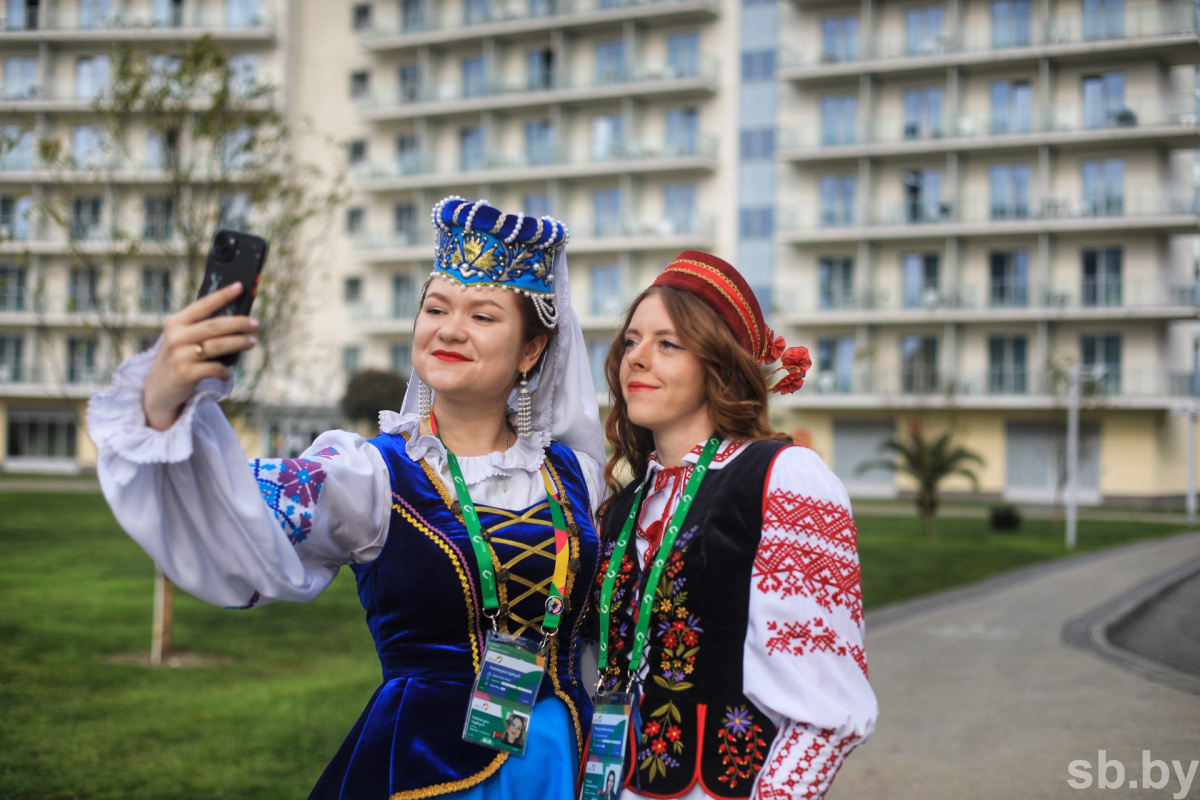
The girl brought a national costume with her to show Belarusian flavour.
“The ornament is a kind of amulet, and many nations have their own. It usually symbolises happiness, love, family well-being and fertility. I wanted to demonstrate what the national clothes of Belarusians look like. Moreover, this is a traditional set of symbols and colours used by our ancestors for many centuries, since pre-Christian times,” Aleksandra Orlovskaya added.

Anastasia Kuznetsova from Russia loves creativity in all its manifestations and also prepared a themed costume for the march. The girl works as a senior lecturer at the Department of Directing Theatrical Performances and Holidays at the Tyumen State Institute of Culture.
“The World Youth Festival march is not only about the costume. First of all, it is about the involvement in the world event. However, I wonder what the outfits of the other participants symbolise. If we talk about Russians and Belarusians, we have a common cultural code. Even if we look at our fairy tales, legends – their plots are similar. There is always Koshchei, Baba Yaga, or other familiar Slavic folklore characters. This is something that unites us since ancient times. Today we need to turn to the common past and say once again that we are together. We have a common destiny, a desire for peace and a common future,” Anastasia Kuznetsova noted.
